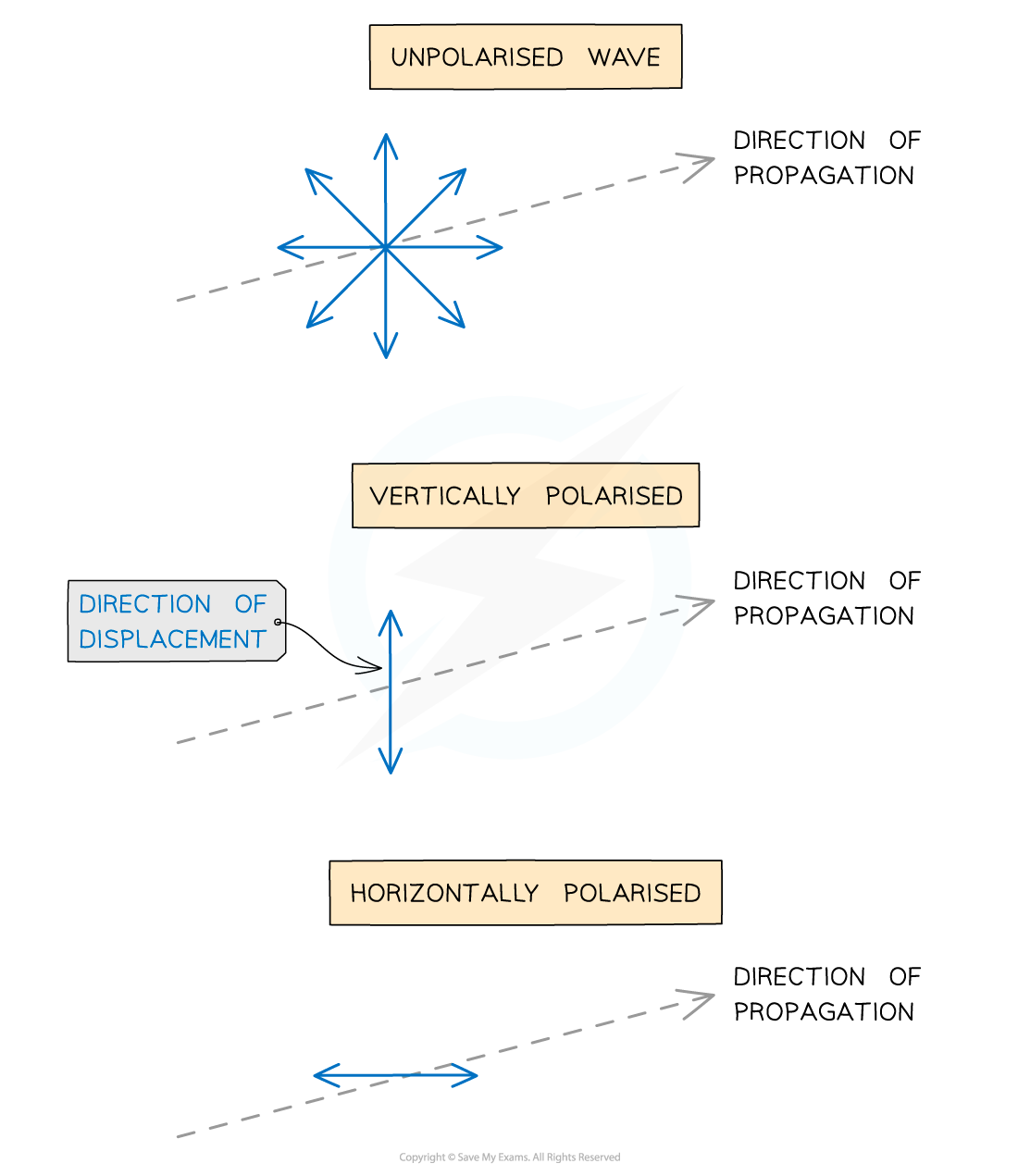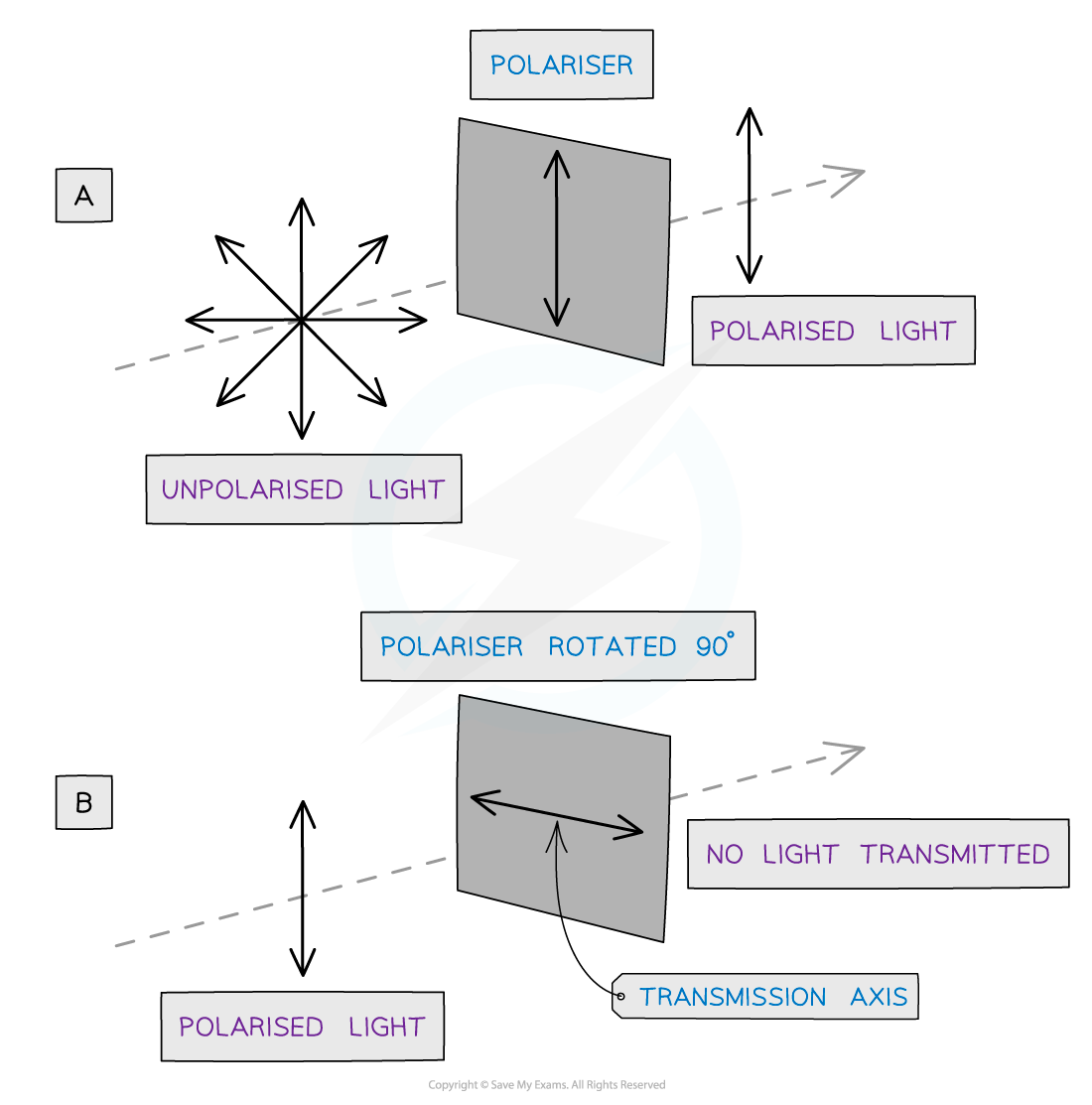Plane Polarisation (Edexcel International A Level (IAL) Physics) : Revision Note
Plane Polarisation
Transverse waves can oscillate in any plane perpendicular to the direction of motion (and energy transfer) of the wave
Such waves are said to be unpolarised
Polarisation occurs when:
Particles are only allowed to oscillate in one of the directions perpendicular to the direction of wave propagation
When a transverse wave is polarised, its electric field is only allowed to oscillate in one fixed plane perpendicular to the direction of motion of the wave
For EM waves it is the plane of the electric fields oscillation that defines its plane of polarisation
A transverse wave can be vertically polarised, horizontally polarised, or polarised in any direction in between

Diagram showing the displacement of unpolarised and polarised transverse waves
Since longitudinal waves oscillate in the same direction as the direction of motion of the wave, polarisation of longitudinal waves cannot occur
Methods of polarisation include polarising filters and reflection from a non-metallic plane surface
Polarising Filters
Light waves can be polarised by making them pass through a polarising filter (also known as a polariser)
The filter imposes its plane of polarisation on the incident light wave
A polariser with a vertical transmission axis only allows vertical oscillations to be transmitted through the filter (A)
If vertically polarised light is incident on a filter with a horizontal transmission axis, no transmission occurs (B), and the wave is blocked completely

Diagram showing an unpolarised and polarised wave travelling through polarisers

You've read 0 of your 5 free revision notes this week
Sign up now. It’s free!
Did this page help you?
